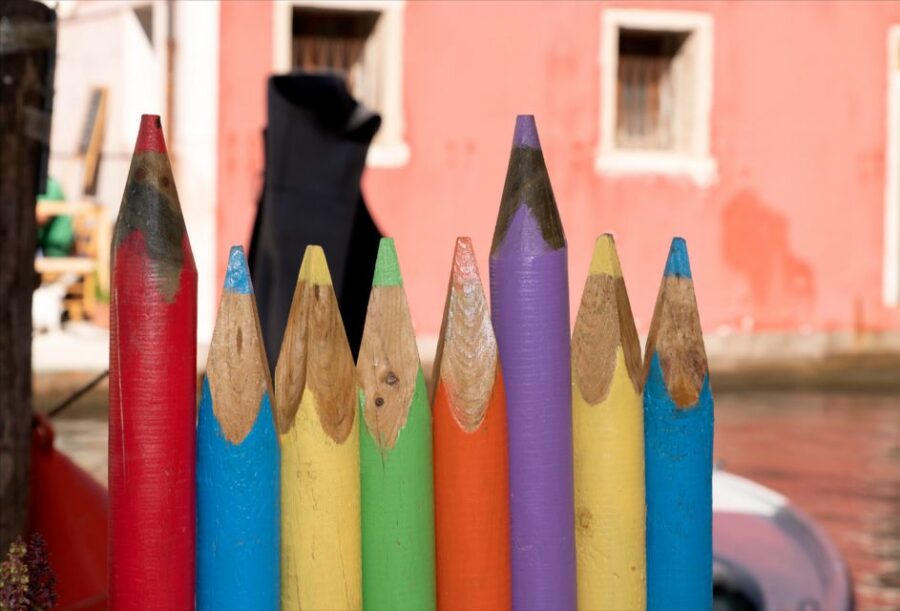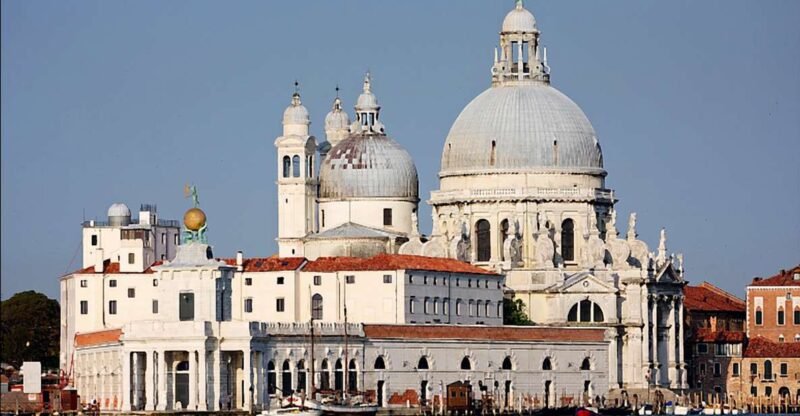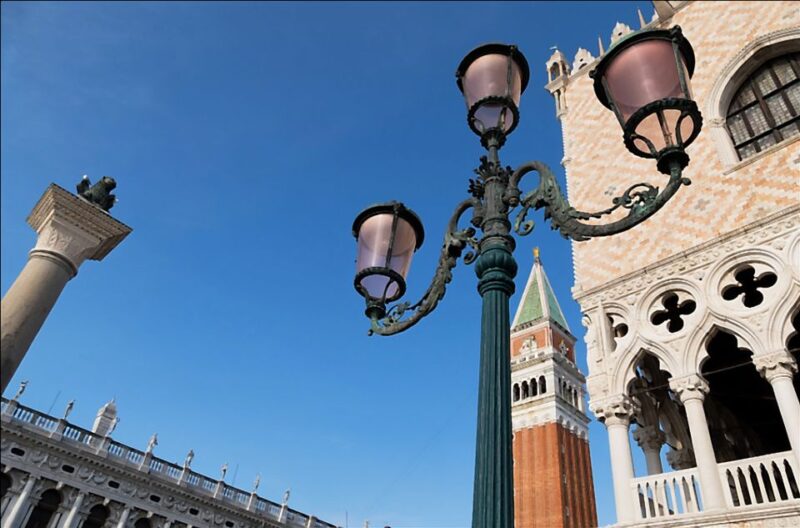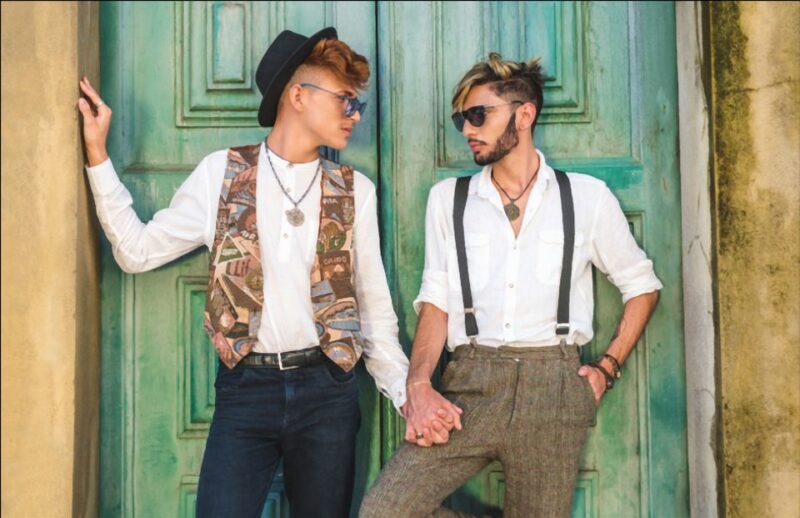Venice’s queer history is a captivating narrative waiting to be explored. This guided walking tour takes participants on a journey through the city’s past, uncovering LGBTQ+ stories from the Middle Ages to the present. Led by knowledgeable guides, the tour delves into the lives of significant figures like Rolandina, the first known Italian transgender woman, and examines the city’s allure for homosexual tourism as well as the impact of fascist censorship. With engaging narratives woven through the city’s stunning architecture and hidden alleys, the tour promises an educational and memorable experience for those interested in unveiling the vibrant queer heritage of this iconic Italian destination.
Key Points

- The tour highlights the LGBTQ+ history of Venice from the Middle Ages to the present, including the tragic story of Rolandina, the first known Italian transgender woman.
- The tour explores Venice’s rise as a homosexual tourism destination during the Grand Tour and examines how the city’s architecture and geography influenced LGBTQ+ life.
- The tour discusses the fascist regime’s attempts to suppress LGBTQ+ visibility in Venice, including the closure of bars, clubs, and gathering places, and the removal of LGBTQ+ references from cultural artifacts.
- The tour includes sites from Madonna’s "Like a Virgin" music video, using these recognizable landmarks as a lens to explore the cultural significance of LGBTQ+ expression.
- Participant testimonials praise the educational and entertaining aspects of the tour, as well as the guide’s extensive historical knowledge and ability to effectively intertwine LGBTQ+ narratives with Venice’s geography.
Tour Overview

The guided walking tour of Venetian Queer History takes participants on a fascinating journey through the city’s LGBTQ+ past. Priced from Kč1,602 per person, this two-hour private or small-group experience is available in English, Italian, German, and Spanish.
Visitors can explore Venice’s queer history from the Middle Ages to the present, learning about cross-dressing, the first known Italian transgender woman, and the punishment of sodomy.
The tour also delves into Venice’s reputation as a homosexual tourism destination during the Grand Tour era and the impact of fascist attempts to "clean up" the city.
With free cancellation up to 24 hours in advance, this tour offers an engaging and educational look into Venice’s LGBTQ+ heritage.
If you're enjoying exploring Venice on foot, you'll love these other walking tours we recommend
Exploring LGBTQ+ History

Although Venice has long been associated with romance and opulence, the city’s LGBTQ+ history offers a fascinating and often overlooked narrative.
The tour explores queer experiences from the Middle Ages to the present day, delving into tales of cross-dressing, transgender pioneers, and the punishment of sodomy. Participants will learn about Rolandina, the first known Italian transgender woman, and the execution she faced in 1354.
The tour also examines Venice’s rise as a homosexual tourism destination during the Grand Tour era, as well as the impact of fascist attempts to "clean up" the city on LGBTQ+ visibility.
Throughout the experience, the guide weaves together the intertwining of queer history with Venice’s captivating geography and architecture.
Rolandina’s Tragic Story

Tragically, Rolandina‘s life was cut short in 1354 when the Venetian authorities executed her for the "crime" of being transgender.
Rolandina, a figure from Venice’s queer history, was one of the earliest known transgender individuals in Italy. Her story highlights the discrimination and persecution that LGBTQ+ people faced in the Middle Ages.
The tour explores Rolandina’s tragic fate:
- She was born biologically male but lived and identified as a woman.
- Rolandina was accused of sodomy and cross-dressing, which were punishable offenses at the time.
- After a highly publicized trial, she was sentenced to death and executed by strangulation.
- Rolandina’s story serves as a sobering reminder of the need to honor and preserve LGBTQ+ histories, even those marked by tragedy.
Venice’s Homosexual Appeal
A certain allure surrounded Venice, captivating the homosexual imagination during the Grand Tour era of the 17th century. The city’s labyrinthine streets, ornate architecture, and vibrant cultural scene provided a discreet haven for same-sex encounters. Wealthy aristocrats and artists flocked to Venice, seeking both artistic inspiration and romantic escapades. This period saw the emergence of a thriving homosexual subculture, as evidenced by the literary works of the time, including Thomas Mann’s "Death in Venice" and Frederick Rolfe’s "The Desire and Pursuit of the Whole."
| Feature | Description |
|---|---|
| Architectural Allure | Ornate, maze-like streets offered privacy |
| Cultural Vibrancy | Artistic stimulation and social freedom |
| Aristocratic Patronage | Wealthy visitors fueled a discreet scene |
| Literary Influence | Contributed to the city’s gay imagery |
Fascist Attempts to Censor

The fascist regime in Italy sought to "clean up" Venice’s vibrant LGBTQ+ scene during the early to mid-20th century. Mussolini’s government cracked down on public displays of homosexuality, arresting and imprisoning LGBTQ+ individuals.
This led to:
- The closure of bars, clubs, and other gathering places that catered to queer Venetians.
- The removal of LGBTQ+ references from literature, art, and other cultural artifacts.
- The surveillance and harassment of known or suspected homosexuals by the police.
- The marginalization and silencing of Venice’s once-thriving queer community.
Despite these repressive measures, the city’s LGBTQ+ heritage endured, setting the stage for its eventual resurgence in the later 20th century.
Loving the local insights? Here are more guided experiences we recommend in Venice
- Murano & Burano Islands Guided Small-Group Tour by Private Boat
- Venice Street Food Tour With Local Guide With Local Food Market Visit
- Real Venetian Kayak – Tour of Venice Canals With a Local Guide
- St. Marks Cathedral: the Shining Golden Basilica – Guided Tour
- Verona City Sightseeing Walking Tour of Must-See Sites With Local Guide
- Best of Venice: Saint Marks Basilica, Doges Palace With Guide and Gondola Ride
Locations From "Like a Virgin"
During the tour, participants have the opportunity to visit locations associated with Madonna’s iconic music video for "Like a Virgin".
The tour guide points out the exact spot where Madonna emerged from the Grand Canal, as well as the steps where she famously posed in her wedding gown.
These recognizable landmarks provide a unique lens through which to explore Venice’s LGBTQ+ history.
Visitors can imagine the cultural significance of the video’s release and how it contributed to the city’s reputation as a hub for queer expression.
Intertwining History and Architecture
Throughout the tour, visitors experience the intertwining of Venice’s LGBTQ+ history with its captivating geography and architecture. The guide highlights how the city’s landmarks and structures have witnessed pivotal moments in queer history.
Participants:
-
Explore hidden alleyways and canals that housed LGBTQ+ meeting spots throughout the centuries.
-
Stand in front of grand palaces that once hosted clandestine queer gatherings and celebrations.
-
Discover architectural features like hidden staircases and concealed entrances that facilitated LGBTQ+ life in the past.
-
Examine how the city’s unique layout and design both enabled and restricted the visibility of queer individuals and communities over time.
Participant Testimonials and Feedback

Participants consistently praise the guided tour for its educational and entertaining aspects. Valerio, a native Venetian, has been widely commended for his extensive knowledge of the city’s history and trivia. Feedback highlights how the tour expertly intertwines LGBTQ+ narratives with Venice’s geography and architecture, providing a captivating and immersive experience.
| Positive Feedback | Negative Feedback |
|---|---|
| Tour content was engaging and informative | Some participants desired more time |
| Guide’s enthusiasm and energy were well-received | N/A |
| Tailored experiences to individual interests | N/A |
Frequently Asked Questions
What Is the Dress Code for the Tour?
There is no dress code specified for the tour. Participants can wear comfortable clothing and footwear suitable for walking around the city. The focus is on the educational and historical aspects of the experience.
Can I Bring My Own Food and Drinks on the Tour?
Participants can bring their own food and drinks on the tour. The guide does not provide any refreshments, so visitors are welcome to bring along any snacks or beverages they may want during the 2-hour walking experience.
Is the Tour Wheelchair Accessible?
The tour is wheelchair accessible. The walking route is designed to accommodate guests with mobility needs, ensuring an inclusive and comfortable experience throughout the 2-hour tour.
Can I Take Photos During the Tour?
Participants are generally allowed to take photos during the tour, though they are advised to be respectful and avoid disrupting the guide’s commentary. The tour company encourages guests to capture the historical sites and landmarks along the way.
Is There a Minimum Age Requirement for Participants?
There is generally no minimum age requirement for this walking tour, as it covers historical and cultural information suitable for all ages. However, the content may touch on mature themes, so parental discretion is advised for young participants.
Recap
The "Venice: Guided Walking Tour of Venetian Queer History" offers an insightful exploration of LGBTQ+ experiences in the city, from the Middle Ages to the present. Participants explore Venice’s rich queer heritage, uncovering captivating narratives interwoven with the city’s stunning architecture and hidden alleys. This educational and memorable experience provides a unique perspective on the often-overlooked LGBTQ+ history of one of Italy’s most iconic destinations.
You can check if your dates are available here:More Walking Tours in Venice
- Replaced: Venice Top Churches, Bell Tower and Old Town Walking
- Sunset Gondola & Mysteries and Ghosts Walking Tour in Venice
- Venice, Dorsoduro, Ca’Foscari University & More Walking Tour
- Private Walking Tour of Venices Old Town With Gondola Ride
- Venice Private Walking Tour
- Morning Venice Walking Tour Plus Doges Palace Guided Visit
More Tours in Venice
- Venice Walking Tour and Gondola Ride
- 4-Hour Private Tour in the Northern Lagoon With Traditional Boat
- Venice Street Food and Sightseeing Small Group Tour With a Native Guide
- A Luxury Gondola Tour in Venice: Onboard Aperitif and Serenade
- Doges Palace Venice Audio Tour Experience
- The Best of Venice Walking Tour
More Tour Reviews in Venice
Not for you? Here's more things to do in Venice we have recnetly reviewed
- From Punta Sabbioni: Venice, Murano & Burano Guided Tour
- The Islands of Venice. Torcello Burano Murano
- Skip the Line: St. Marks Basilica Guided Tour
- Venice E-bike Rental
- Wine Tasting in Venice
- Venice: 1.5-Hour Wandering Around the City
- Venice: The Three Tenors Concert Ticket
- Venice : Discover Venice on Hidden Gems Guided Walking Tour
- Murano: Glass Blowing Demonstration and Artistic Glass Gift
- Venice: Rialto Bridge & Offbeat Unusual Venice Walking Tour
- Venice: Morning Walking Tour
- Venice: Murano and Burano Half-Day Lagoon Trip
